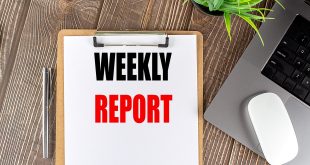The United States Federal Reserve is holding its fifth policy meeting this year and it is expected that the discussion about the future of the massive asset purchases, as well as the increasing inflationary pressures, will take center stage in discussions amongst members of the Federal Open Market Committee (FOMC).
Of course, a certain focus in the two-day meeting that concludes on Wednesday will remain on the state of the pandemic, which the Fed has repeatedly said the progress of economic recovery largely depends on.
Another statement that has been repeatedly stated by Fed officials is that the high inflation is due to transitory factors, but with inflation exceeding expectations over the past couple of months, more have voiced their concerns that inflationary pressures might be more persistent than the Fed is indicating, calling for a subsequent in the accommodative monetary policy.
Last month, the consumer price index (CPI) surged by 5.4% on an annual basis, logging its biggest increase since 2008. This was also the fourth consecutive monthly increase in the inflation rate.
A dominant view held by many Fed officials, led by Chairman Jerome Powell, is that interest rates should remain near 0% until the labor market has recovered.
A counterpoint stems from worries that the Fed might be too late in responding to the high inflation, with fears that a sudden rake hike could lead to a recession.
On the other hand, the Fed said it would continue to support the economy with all the tools at its disposal, expecting policy adjustments to result from substantial further progress towards the price stability and employment targets.
The spread of the coronavirus Delta variant is also raising pandemic-related economic concerns, but the U.S. economy continues to show mostly positive economic indicators and large growth rates.
A number of FOMC members have recently said that the time has come to begin a discussion about how to scale back the massive $120 billion-a-month bond purchases, which the Fed believes has played a significant role in the economic rebound, coupled with the ultra-low interest rates.
Since the monetary easing is coupled with huge fiscal stimulus, including the $1.9 trillion rescue plan by the Biden administration, the concerns over recession and inflation risks took a political tone that was clear in the latest testimony by Powell before Congress.
Powell tried to calm the concerns of lawmakers, promising inflationary pressures are temporary and due to transitory factors, such as supply shortages and bottlenecks, and at the same time ensuring that the Fed is more than ready to adjust its policy accordingly if inflation overshoots or goes out of control.
The patient stance by the Fed, which basically reflects a view that current accommodative policies will lead to a sustainable 2% inflation rate and the labor market nearing a restoration of full employment, is being challenged within the central bank, with a number of FOMC members expressing their support for beginning the tapering process sooner rather than later.
Meanwhile, the tolerance with the high inflation is attributed to a view that as inflation remained weak for years, there is no harm in it exceeding 2% before reaching the 2% sustainable target.
Powell told Congress that the economy remains far from achieving the Fed’s targets, so it remains to be seen how the Fed will be assessing the progress towards these targets in light of the current market risks and disruptions.
 Noor Trends News, Technical Analysis, Educational Tools and Recommendations
Noor Trends News, Technical Analysis, Educational Tools and Recommendations





